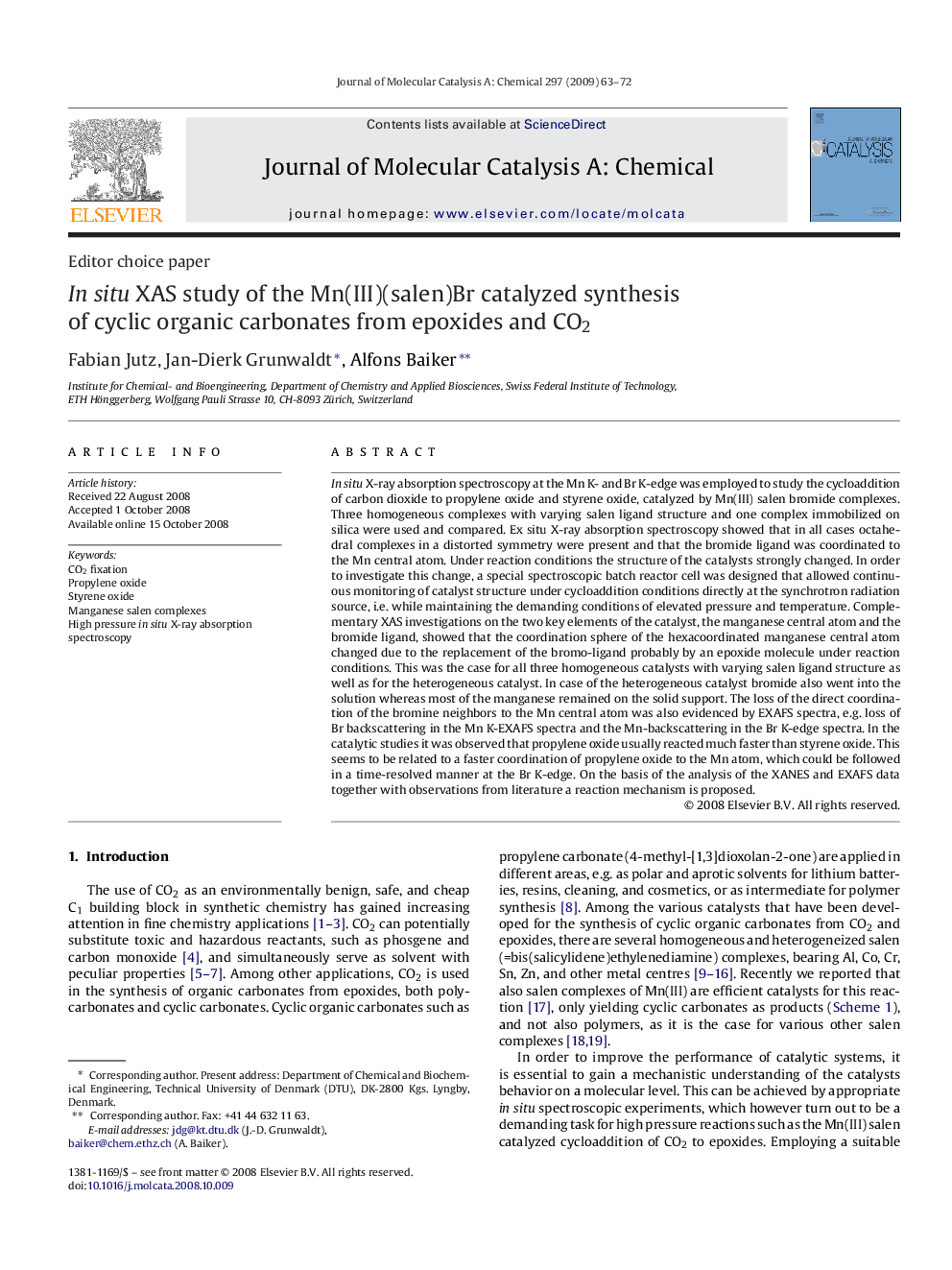| Article ID | Journal | Published Year | Pages | File Type |
|---|---|---|---|---|
| 67310 | Journal of Molecular Catalysis A: Chemical | 2009 | 10 Pages |
In situ X-ray absorption spectroscopy at the Mn K- and Br K-edge was employed to study the cycloaddition of carbon dioxide to propylene oxide and styrene oxide, catalyzed by Mn(III) salen bromide complexes. Three homogeneous complexes with varying salen ligand structure and one complex immobilized on silica were used and compared. Ex situ X-ray absorption spectroscopy showed that in all cases octahedral complexes in a distorted symmetry were present and that the bromide ligand was coordinated to the Mn central atom. Under reaction conditions the structure of the catalysts strongly changed. In order to investigate this change, a special spectroscopic batch reactor cell was designed that allowed continuous monitoring of catalyst structure under cycloaddition conditions directly at the synchrotron radiation source, i.e. while maintaining the demanding conditions of elevated pressure and temperature. Complementary XAS investigations on the two key elements of the catalyst, the manganese central atom and the bromide ligand, showed that the coordination sphere of the hexacoordinated manganese central atom changed due to the replacement of the bromo-ligand probably by an epoxide molecule under reaction conditions. This was the case for all three homogeneous catalysts with varying salen ligand structure as well as for the heterogeneous catalyst. In case of the heterogeneous catalyst bromide also went into the solution whereas most of the manganese remained on the solid support. The loss of the direct coordination of the bromine neighbors to the Mn central atom was also evidenced by EXAFS spectra, e.g. loss of Br backscattering in the Mn K-EXAFS spectra and the Mn-backscattering in the Br K-edge spectra. In the catalytic studies it was observed that propylene oxide usually reacted much faster than styrene oxide. This seems to be related to a faster coordination of propylene oxide to the Mn atom, which could be followed in a time-resolved manner at the Br K-edge. On the basis of the analysis of the XANES and EXAFS data together with observations from literature a reaction mechanism is proposed.
Graphical abstractIn situ X-ray absorption spectroscopy at the Mn K- and Br K-edge was employed to study the cycloaddition of carbon dioxide to propylene oxide and styrene oxide, catalyzed by Mn(III) salen bromide complexes. The use of specially designed spectroscopic batch cells allowed monitoring the behavior of three different homogeneous catalysts as well as of an immobilized derivate. The data obtained shed light on the key elements of the catalysts on a molecular level and allowed proposing a consistent reaction mechanism.Figure optionsDownload full-size imageDownload as PowerPoint slide
